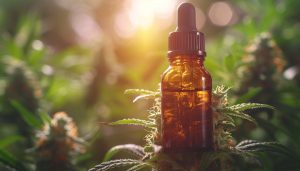The cannabidiol (CBD) industry is experiencing tremendous growth, with many stores and products available on the market. However, it can be difficult to distinguish products that truly contain CBD from those that do not contain this molecule with therapeutic properties. In this article, we will look at the different methods to prove that it is indeed CBD, as well as the precautions to take to avoid unpleasant surprises.
Sommaire
ToggleLaboratory examinations: rigorous control of products
One of the best solutions to verify the presence of CBD in a product is to rely on analyzes carried out by independent laboratories. These reviews are essential to ensure the quality and legality of products available on the market, but also to differentiate between products that actually meet legislative requirements in terms of cannabinoid content.
High performance liquid chromatography (HPLC)
This analysis technique makes it possible to precisely evaluate the chemical composition of a sample and identify all its components. Through spectrometry, HPLC offers a detailed view of the different cannabinoids present, including CBD and THC (the concentration of which must remain below legal limits).
Near infrared spectroscopy (NIR)
This is another analytical method which, using scattered reflectance, allows the composition of samples to be determined with good precision. Although less commonly used than HPLC, NIR spectroscopy also has the advantage of being able to quickly and contactlessly identify major components, such as CBD.
Home tests: a practical but less reliable method
For those who want to check for themselves whether a product contains CBD, several types of tests are available on the market. However, it is important to emphasize that no in-house test can guarantee 100% reliability and that it is always best to rely on laboratory tests for a definitive answer.
Cannabinoid test kits
Specific test kits make it possible to detect the presence of CBD or other cannabinoids in a product. These kits often work with colored reagents that change color depending on the cannabinoid concentration. However, their precision is generally lower compared to laboratory methods.
- Take a small sample of the product in question;
- Add a few drops of the reagent provided in the kit;
- Shake the mixture and observe the reaction: a change in color will indicate the presence of CBD. The color chart provided with the kit will allow you to estimate an approximate concentration.
Rapid drug tests
Some rapid drug testing kits can also be used, such as those that test for THC in saliva. However, these tests are generally less reliable in identifying CBD and do not provide precise information on its concentration.
The choice of suppliers: a guarantee of seriousness
To ensure that you are purchasing a product that truly contains CBD, you should exercise caution when choosing your suppliers. Certain criteria can help you recognize a serious seller:
- Clear and precise display of cannabinoid concentrations :
- This is essential information that must appear on the product label;
- Provision of laboratory analysis results : thus, you will be able to check the reliability of a product by consulting its results with a third-party laboratory;
- Complete traceability of raw materials and finished products : this demonstrates the seriousness of the company and its commitment to quality and legality;
- Transparency regarding CBD extraction and formulation methods : a serious supplier must be able to inform the consumer about the processes used to extract and develop its products.
In summary, proving that it is indeed CBD requires above all a rigorous approach both in the choice of suppliers and in the verification of the examinations carried out on the finished products. Do not hesitate to inquire with the seller and favor laboratory control solutions to ensure optimal reliability.



